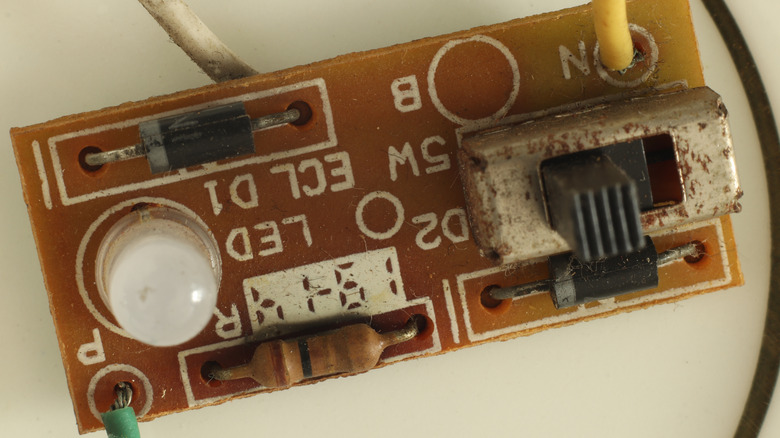The Four (And More) Basic Parts Of An Electrical Circuit
When you switch on a light, you probably don't think about what goes on to make the light actually light up. In order for the light to ... well, light, the four basic parts of an electrical circuit must be in place to provide the power needed to produce light or to power another type of electrical device.
Every electric circuit, regardless of where it is or how large or small it is, has four basic parts: an energy source (alternating current or direct current), a conductor (wire), an electrical load (device), and at least one controller (switch).
Visualize what happens when you switch on a room light. You toggle or push a switch to "turn on" the light. Your action causes electricity to flow (much like water flows through a pipe) through the wires of the electrical system to the bulb, which converts the electrical energy traveling through the wires to visible light. The process is essentially the same for powering up a computer, or turning on a TV, or providing the electrical power needed to start or operate any electrical device.
The Energy Source
In an electrical circuit, the power source provides the voltage (the force that pushes electrons through a conductor — measured in volts) and current (the rate of flow of electrons — measured in amperes) to energize a device attached to the circuit.
A voltage power source provides a constant voltage level to the circuit. Examples of voltage power sources are batteries, like the ones in your laptop computer or car, the energy from the solar panels on your roof, your car's alternator, or the energy coming from your local power plant or hydroelectric dam.
On the other hand, a current power source (a.k.a. constant-current source), which is measured in amps, provides a constant current of energy regardless of its voltage. Typically, constant-current circuits are included in a system to protect the device providing the electrical load on the circuit. For example, an LED requires a constant level of current to protect it from burning out or being damaged.
The Conductor
In a typical electrically powered environment that uses common electrical devices, the conductor is the wiring in a home or device that provides the path of the circuit, on which the energy flows. The conductor (conduction) system interconnects all of the other parts of the circuit.
Electrical power flows somewhat like water through a pipe or hose. The conductor provides the piping through which the electrical energy flows from its source to its load and back again sometimes. And like water through a hose, the amount of energy that is required on the circuit (as demanded by the load device) determines the gauge of the wire that makes up the circuit conductor.
The Switch
The switch provides the control that closes (continues) or opens (breaks) the electrical energy flow on the circuit. A variety of circuit switches exist, including wall switches, push buttons, key toggles, and many biometric devices.
A closed circuit switch can have either a sustained contact or a transient contact. A sustained contact, such as a light switch, maintains the circuit in a state that allows for a constant flow of energy. A transient, or momentary, contact only provides an energy flow to the circuit while a button or similar device is being pushed or engaged. When the button is released, the circuit is once again open.
Other Components to Note in an Electrical Circuit
Any device attached to an electrical circuit that is activated or energized by the flow of electricity to it, provides the electrical load on the circuit. The load is the amount of electrical energy the device uses to complete its task. This electrical consumption is measured in watts, which equals the current (amps) multiplied by the volts on the circuit. Lights, TVs, motors, heaters and appliances are load devices that consume power.
While most circuit definitions show either three or four basic components, there are other features and components that can be included in what makes up an electrical circuit. Various descriptions of electrical circuits may include other electrical components, such as gates, hinges, transistors, meters of varying types, and so on. Whether or not these items should or shouldn't be in the definition really depends on you, your understanding, and the application for the electrical circuit in question.
